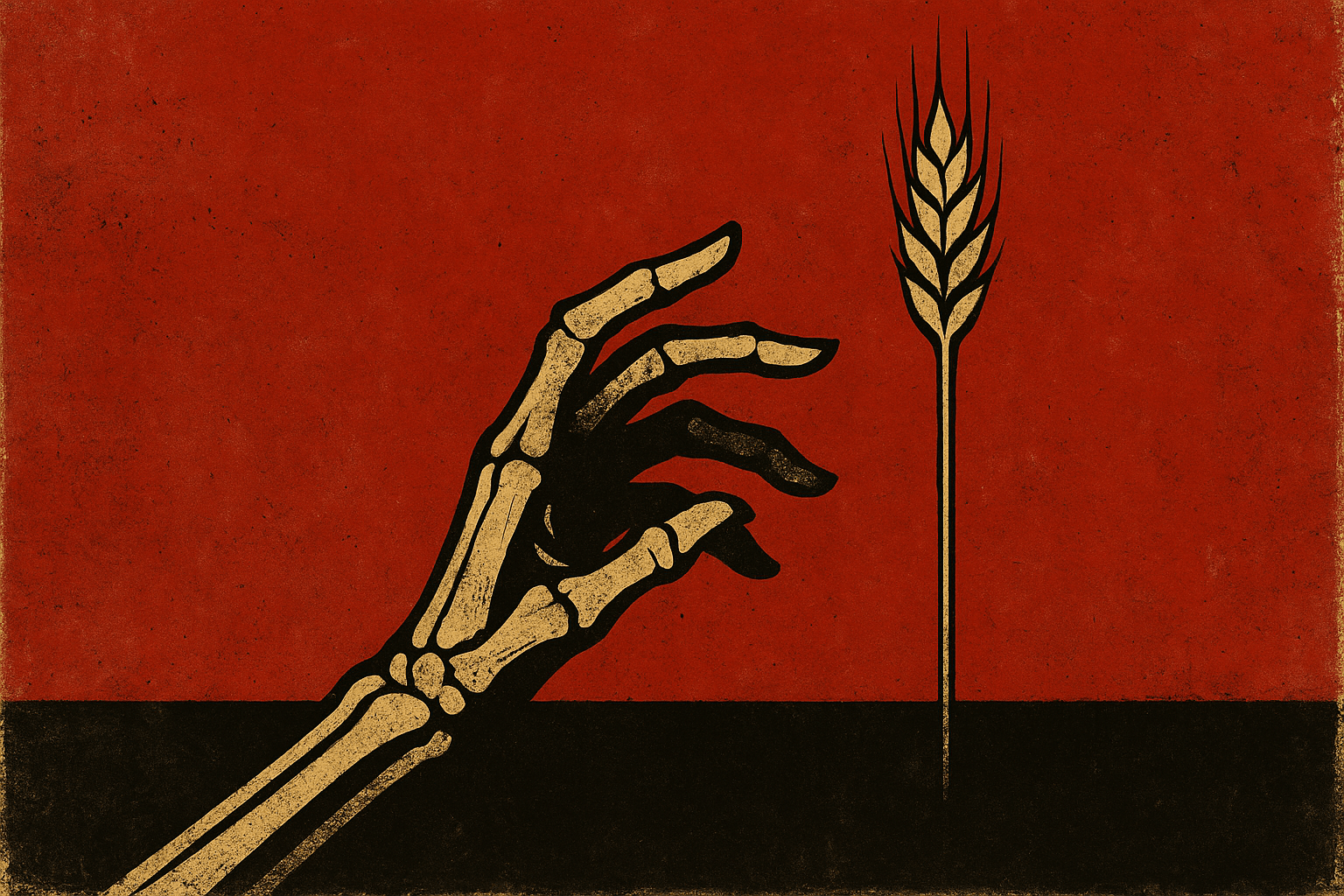The Ancient Logic of the Empty Granary
The weaponization of food is as old as warfare itself. In the age of walled cities and fortified castles, the siege was a primary military strategy. While battering rams and catapults worked on the stone walls, hunger worked on the people within. An army that couldn’t breach a fortress could simply surround it, cut off all supply lines, and wait. This was a brutal, slow-motion strangulation.
The logic was simple and universal. A defending army is only as strong as its food reserves. As days turned into weeks and months, granaries would empty. Rations would shrink. Soldiers and citizens alike would watch their children, spouses, and neighbors grow gaunt and weak. Morale would crumble faster than any wall. The Roman siege of Jerusalem in 70 AD is a terrifying example. The historian Josephus chronicled scenes of utter desperation, where families turned on each other for scraps and the city’s will to resist was systematically starved into oblivion.
In this context, food wasn’t just sustenance; it was a strategic resource. To control the food was to control the fate of the city. Burning an enemy’s fields before a retreat or poisoning their wells were extensions of this same principle: attack the enemy’s ability to survive.
The Industrialization of Starvation: The 20th Century
If ancient sieges weaponized hunger on a local scale, the 20th century saw its industrialization. Totalitarian regimes and total war transformed famine from a localized tactic into a tool of genocide and state policy, capable of killing millions.
The Holodomor: A Famine by Decree
Perhaps the most chilling example of politically engineered starvation is the Holodomor (from the Ukrainian “to kill by starvation”). Between 1932 and 1933, millions of Ukrainians perished in a man-made famine orchestrated by Joseph Stalin’s Soviet regime. This was not a collateral effect of war or a simple crop failure; it was a deliberate campaign of terror.
As part of his drive for forced collectivization of agriculture, Stalin targeted Ukraine, a region with a strong sense of national identity and resistance to Soviet control. The state imposed impossibly high grain quotas on Ukrainian villages. When these quotas couldn’t be met, brigades of party activists were sent to confiscate everything edible. They took not just the harvested grain but also seed grain for the next planting, vegetables from family gardens, and even household pets.
Simultaneously, the regime sealed Ukraine’s borders and implemented an internal passport system, trapping the starving population. It became illegal to flee. The goal was clear: to crush the Ukrainian peasantry and break the back of Ukrainian nationalism. The Holodomor stands as a testament to how food policy can be weaponized to achieve political and genocidal ends.
The Siege of Leningrad: Death by Encirclement
During World War II, the Nazi regime deployed starvation with similar brutality. The Siege of Leningrad, which lasted for 872 days from 1941 to 1944, was a conscious act of extermination through hunger. Hitler’s orders were explicit: the city was to be surrounded, shelled, and starved into submission. No surrender was to be accepted.
The German blockade cut off nearly all food and fuel supplies to the city of almost three million people. Rations plummeted to starvation levels. At its lowest point, the daily bread ration for a civilian was a mere 125 grams—a small, dense slice made mostly of sawdust, cellulose, and other fillers. The city descended into a living hell. People boiled leather belts and wallpaper glue for sustenance. Diaries from the siege record a slow, agonizing descent into despair, where the only thing on anyone’s mind was food. Over one million civilians died, the vast majority from starvation.
The only lifeline was the “Road of Life”, a perilous ice road across the frozen Lake Ladoga, which was under constant German bombardment. The siege represents a clear military strategy where the hunger of men, women, and children was the primary weapon aimed at the city’s heart.
The Enduring Tactic in Modern Conflicts
Despite international laws defining it as a war crime, the use of starvation persists. In modern conflicts, the tactics have adapted but the goal remains the same. Instead of medieval walls, blockades are now enforced on entire regions.
In recent years, we have seen this strategy play out with horrifying clarity:
- In Syria, the Assad regime repeatedly laid siege to opposition-held areas like Madaya and Eastern Ghouta, blocking humanitarian aid convoys and creating “surrender or starve” conditions for the civilian population.
- In Yemen, blockades on ports and the deliberate bombing of farms, fishing boats, and markets by the Saudi-led coalition created famine-like conditions, weaponizing the population’s dependency on imported food.
- In the Tigray region of Ethiopia, reports from humanitarian organizations have detailed how Ethiopian and Eritrean forces systematically destroyed food stores, looted harvests, and blocked aid, using hunger as a central part of their military campaign.
In these cases, the denial of food is not an unfortunate byproduct of fighting; it is a central pillar of the military strategy.
A Crime Against Humanity
The deliberate use of starvation is unequivocally a war crime under the Geneva Conventions. It is a fundamental violation of human rights and international humanitarian law. Yet, accountability remains elusive. Proving the “intent” to starve a population is legally challenging, and geopolitical interests often shield perpetrators from justice.
Looking at history, from the walls of Jerusalem to the fields of Ukraine and the besieged cities of today, the lesson is stark. When we remove the shield of civilization, one of the first and most terrible weapons that emerges is the denial of bread. It is a quiet, brutal, and profoundly inhuman tactic that strips people of their dignity before it takes their lives, reminding us that the most vulnerable are often the primary targets of war.
